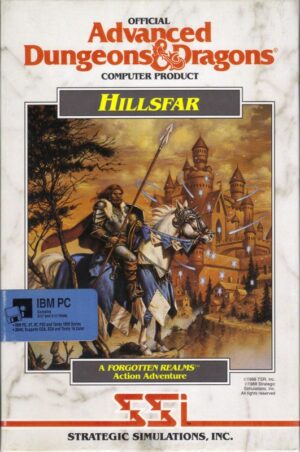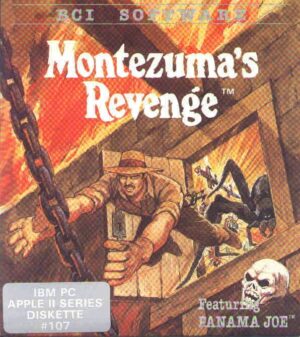Retro Replay Review
Gameplay
WWF Wrestlemania: Steel Cage Challenge delivers an arcade-style wrestling experience that’s both accessible to newcomers and satisfying for experienced players. The control scheme is straightforward, offering basic strikes, grapples, and top-rope maneuvers without overwhelming complexity. Each WWF superstar comes equipped with their signature moves—whether it’s Hulk Hogan’s atomic leg drop or Bret “Hitman” Hart’s sharpshooter—so performing iconic finishers feels rewarding and faithful to the source material.
The inclusion of individual strengths and weaknesses gives each wrestler a distinct feel in the ring. Larger powerhouses like Sid Justice can dominate with crushing slams, while technical wrestlers such as “Macho Man” Randy Savage rely on speed and reversals to turn the tide. Managing stamina and meter bars is essential: a well-timed reversal can swing momentum, while sloppy offense leaves you vulnerable to counterattacks.
Game modes range from a straightforward single-match exhibition to a more structured career mode, where you guide your chosen superstar through a gauntlet of opponents. The highlight, of course, is the steel cage challenge—two competitors locked within unforgiving steel walls, where victory only comes by pinfall or escaping the enclosure. This environment adds urgency and thrills, forcing players to balance aggression with caution lest they be slammed into the unforgiving mesh.
Multiplayer battles shine brightest here: the intense back-and-forth of two human opponents often produces unforgettable moments, whether it’s a last-second cage escape or a dramatic reversal. AI difficulty can be dialed up for seasoned players, ensuring that climbing the career ladder stays challenging. Overall, the gameplay strikes a fine balance between nostalgia, depth, and pick-up-and-play fun.
Graphics
On the Sega Genesis and Super Nintendo platforms, WWF Wrestlemania: Steel Cage Challenge captures the 16-bit era’s charm with colorful, detailed sprites and smooth animations. Each wrestler’s portrait in the roster screen closely resembles their real-life counterpart, complete with distinctive attire and facial expressions. In-ring models are slightly simplified but still clearly convey personality.
Animations are well executed for the time: you’ll witness believable weight shifts as big men charge, nimble flips from cruiserweights, and fluid transitions into submission holds. Signature moves trigger pose animations that add dramatic flair—when Jake “The Snake” Roberts readies the DDT, for instance, his avatar crouches with that menacing stare fans recognize from TV.
The steel cage itself is a highlight, rendered with grid lines that cast dynamic shadows on the mat. Background details—such as the roaring crowd, referee gestures, and ring announcer on the apron—enhance immersion. While today’s standards have long surpassed 16-bit visuals, the game remains a lovingly crafted time capsule, evoking the era’s aesthetic without feeling dated.
Story
Though wrestling games traditionally prioritize action over narrative, the career mode in Steel Cage Challenge weaves a loose storyline that mirrors the grand spectacle of WWF programming. You start as an up-and-comer, earning match bookings and climbing the ranks through victory after victory. Each win nets you bragging rights and occasional cutscenes of your rival taunting you, capturing that weekly-television drama.
You’ll face a who’s who of late ’80s and early ’90s wrestling royalty, from The Undertaker’s ominous stare to “Rowdy” Roddy Piper’s trash-talking antics. Each feud feels unique thanks to brief pre-match dialogues: The Mountie’s stern warning differs in tone from Ted DiBiase’s money-driven threats. While minimalistic by modern story-driven game standards, these moments create a sense of progression and rivalry.
The ultimate goal—reaching the top of the cards and headlining a steel cage match—mirrors the path to WrestleMania glory. It may lack branching narrative paths or cinematic cutscenes, but it nails the excitement of building toward a climactic showdown. For fans of classic WWF storytelling, the game delivers the essentials: heroes, villains, and high-stakes confrontations.
Overall Experience
WWF Wrestlemania: Steel Cage Challenge remains a cornerstone of retro wrestling gaming thanks to its robust roster, crisp controls, and signature match variety. It excels as both a solo challenge—thanks to its career ladder—and as a multiplayer party game, where friendly rivalries ignite around the living room. The steel cage match, in particular, stands out as a pulse-pounding test of skill and timing.
While the lack of deep customization and modern polish may deter players accustomed to contemporary sports-entertainment titles, fans of pixelated nostalgia will find plenty to love. The balance between accessibility and depth ensures newcomers won’t be overwhelmed, while hardcore players can still chase perfect reversals and flawless finishers.
Beyond gameplay, the faithful representation of WWF personalities and moves serves as a love letter to the golden era of wrestling. Hearing the announcer call out your favorite superstar’s trademark technique and seeing them execute it on screen brings an authentic thrill. Even decades later, the game’s energy and fast-paced action hold up remarkably well.
In sum, WWF Wrestlemania: Steel Cage Challenge offers an engaging package that captures the spirit of its era. Whether you’re a longtime wrestling aficionado revisiting childhood memories or a newcomer seeking retro sports action, the steel cage awaits. Prepare for high-flying reversals, bone-jarring slams, and the ecstatic roar of victory atop the steel wall.
 Retro Replay Retro Replay gaming reviews, news, emulation, geek stuff and more!
Retro Replay Retro Replay gaming reviews, news, emulation, geek stuff and more!









Reviews
There are no reviews yet.